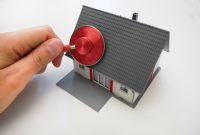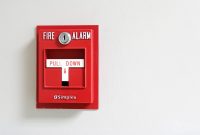Fire insurance is an extra layer of protection that standard homeowners and renters insurance do not offer. It provides additional coverage for water and smoke damage caused by a fire. Among other things, it covers fires caused by faulty wiring, electrical problems, gas explosions, bursting water tanks, and natural disasters such as lightning. It also covers fires that occur as a result of unattended candles and appliances.
Exclusions from fire insurance
A property insurance policy can have many exclusions. A common exclusion is “dishonest or criminal acts,” which is not included in a standard fire policy. As a result, the insurance policy will typically provide less favorable coverage than a standard policy. In the case of Niagara BYG Capital, LLC, the court found the exclusion unenforceable.
Another important aspect of fire insurance is the sum insured. This type of insurance covers the cost of replacing the insured object if it is destroyed by fire, explosion, or other disaster. The insurer will also pay for any damaged appliances, household articles, and service providers. The amount of coverage varies between policies, so it is important to fully understand your policy’s exclusions.
Generally speaking, a standard fire insurance policy does not cover electrical equipment. This excludes loss or damage caused by electrical wiring, fan, over-running, excessive pressure, and self-heating. There are also exclusions related to volcanic eruptions, lightning, and delay or interruption of use. Despite these limitations, you may be able to purchase earthquake (fire and shock) add-on riders to cover these losses.
Limitations of fire insurance coverage
When looking for a fire insurance policy, it’s important to understand the limitations. Many companies have limits imposed on the amount of coverage they can provide. A two-year contractual limitation period does not provide enough time to make a claim in many circumstances. Some insurers may offer higher coverage limits in exchange for a higher premium.
Some policies will only cover fires that happen in or around the home. Some will not cover homes that are located in or near canyons, which funnel winds and create large wildfires. You may need to look into additional coverage, such as FAIR insurance, to ensure that you’re fully covered in the event of a fire.
Many policies also contain a clause that limits the amount of coverage an insurer will pay out if a property owner fails to properly maintain their premises. This can include failing to install appropriate heating and electrical units, installing smoke alarms, making sure fire exits are clear and functioning properly, and keeping elevators and stairs in working order. In addition, violations of building codes or other maintenance problems can affect the amount of coverage an insurer will pay out. You should therefore have your property inspected regularly to ensure proper compliance.
Cost of fire insurance
There are several factors that determine the cost of fire insurance, including the value of your home, where you live, and the amount of coverage you need. If you live in a high-crime area, for example, your premiums will be much higher than if you live in a safe neighborhood. Additionally, you should consider the cost of your insurance if your home has HVAC problems or a history of wildfires.
One of the most tragic costs of fires is the loss of life. The United States has one of the highest rates of fire-related deaths per capita in the industrial world, with over 37,000 deaths reported in 2011 alone. That figure doesn’t include the 3,005 civilian deaths and injured firefighters. In 2011, the net cost of fire insurance coverage in the US was $20.2 billion, after accounting for the monthly premiums paid.
Once a fire has destroyed your home, the next step is filing a claim. This involves filling out the necessary forms and providing evidence of the damage. An insurance adjuster will then come to your property to inspect the damages. Once you’ve submitted the necessary documents, the insurer will determine what the settlement amount will be, minus the deductible (which you need to pay before the insurer covers the remainder).
Other structures covered by fire insurance
Many home insurance policies include coverage for other structures. This coverage is usually up to 10 percent of the dwelling portion of the policy. It is possible to increase the limit to cover additional structures, like detached buildings. It is important to determine the value of the covered items. For example, if you have an expensive garage, you may need to increase the coverage for that.
The additional coverage for other structures is often based on the replacement cost value of the structures, but the insurance company may calculate the loss based on the actual cash value. The coverage limit for other structures depends on the limit of Coverage A, which covers the structure of the home. This amount is usually a percentage of Coverage A.
Other structures coverage is also common for detached structures. It is best to include this coverage in your insurance policy because it will ensure that the replacement value of these structures is covered if your home burns down. However, you need to make sure that the coverage for such structures is not too high, as it will reduce the overall value of the home.



